Categories: Featured Articles » Novice electricians
Number of views: 215847
Comments on the article: 15
How to make a simple electric motor in ten minutes
It is always interesting to observe changing phenomena, especially if you yourself are involved in the creation of these phenomena. Now we will assemble the simplest (but really working) electric motor, consisting of a power source, a magnet and a small coil of wire, which we ourselves will do.
There is a secret that will make this set of items become an electric motor. A secret that is both smart and amazingly simple. Here is what we need:
-
1.5V battery or battery.
-
Holder with contacts for the battery.
-
Magnet.
-
1 meter of wire with enamel insulation (diameter 0.8-1 mm).
-
0.3 meters of bare wire (diameter 0.8-1 mm).
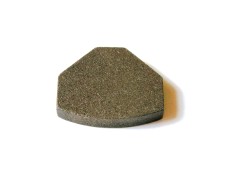

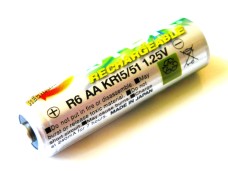
We will start by winding the coil, the part of the electric motor that will rotate. To make the coil sufficiently smooth and round, wrap it on a suitable cylindrical frame, for example, on a AA size battery.
Leaving 5 cm of wire loose at each end, we wind 15-20 turns on a cylindrical frame.
Do not try to wind the coil particularly tightly and evenly, a small degree of freedom will help the coil to better maintain its shape.
Now carefully remove the coil from the frame, trying to maintain the resulting shape.
Then wrap the loose ends of the wire several times around the turns to maintain their shape, making sure that the new fastening turns are exactly opposite each other.
The coil should look like this:
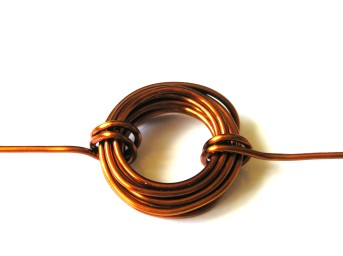
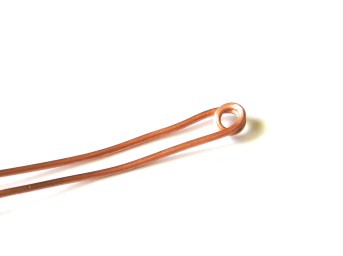
Now is the time for the secret, the feature that will make the motor work. This is a secret, because it is an elegant and non-obvious technique, and it is very difficult to detect when the engine is running. Even people who know a lot about the operation of engines may be surprised at the ability of the engine to work until they discover this subtlety.
Holding the coil vertically, lay one of the free ends of the coil on the edge of the table. Use a sharp knife to remove the upper half of the insulation, leaving the lower half in the enamel insulation.
Do the same with the second end of the coil, making sure that the uninsulated ends of the wire point up at the two free ends of the coil.
What is the meaning of this technique? The coil will lie on two holders made of bare wire. These holders will be attached to different ends of the battery, so that electric current can pass from one holder through the coil to another holder. But this will only happen when uninsulated halves of the wire are lowered down, touching the holders.
Now you need to make support for the coil. These are just turns of wire that support the coil and allow it to rotate. They are made of uninsulated wire, since in addition to supporting the coil, they must deliver electric current to it.
Just wrap each piece of bare wire around a small nail - and get the right part of our engine.
The foundation of our first The electric motor will be the battery holder. This will be a suitable base, because when the battery is installed, it will be heavy enough to the electric motor did not tremble.
Assemble the five parts together as shown in the picture (initially without a magnet). Put a magnet on top of the battery and gently push the coil ...
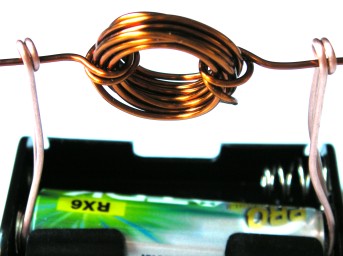
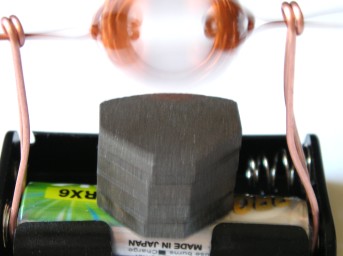
If everything is done correctly, the COIL WILL START QUICKLY ROTATING! We hope that everything, like in our experiment, will work the first time.
If the engine still does not work, carefully check all electrical connections. Does the coil rotate freely? Is the magnet close enough (if not enough, install additional magnets or cut the wire holders)?
When the motor starts, the only thing you need to pay attention to is not to overheat the battery, since the current is quite large.Just remove the coil and the chain will be broken.
See also at i.electricianexp.com
:
